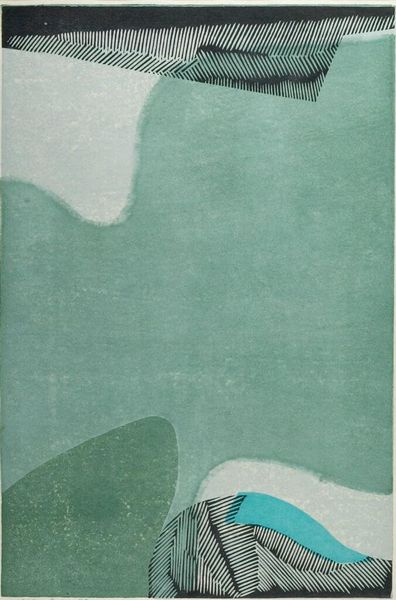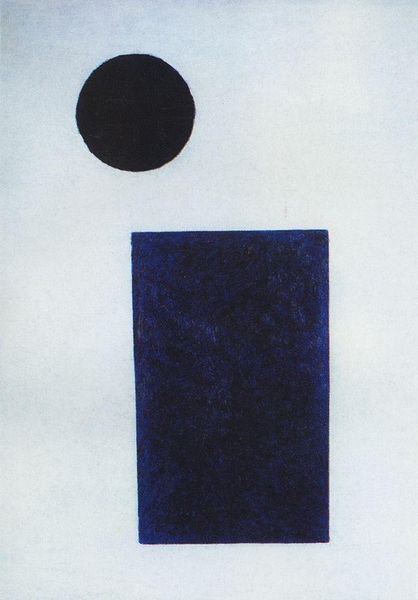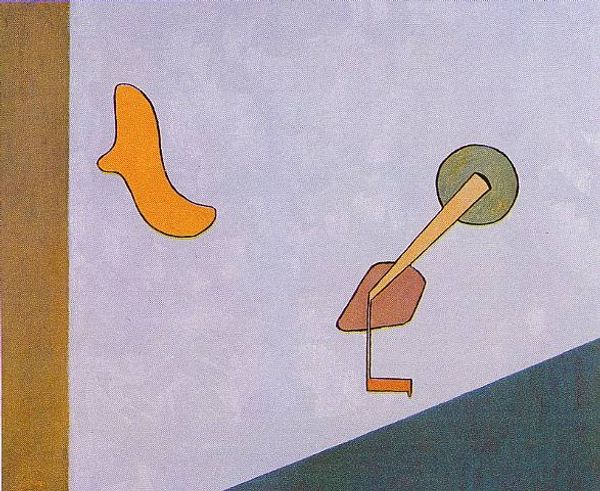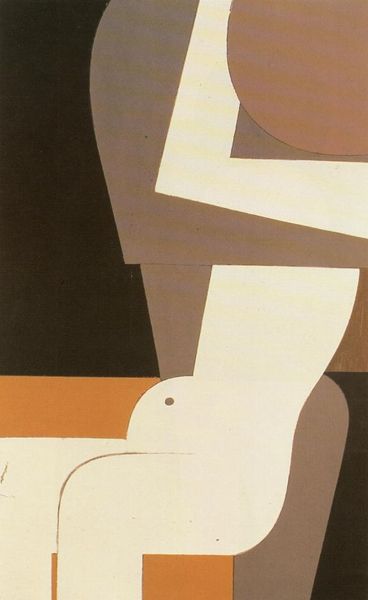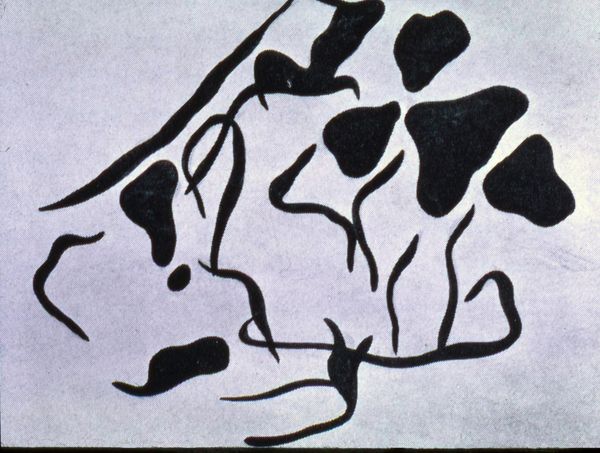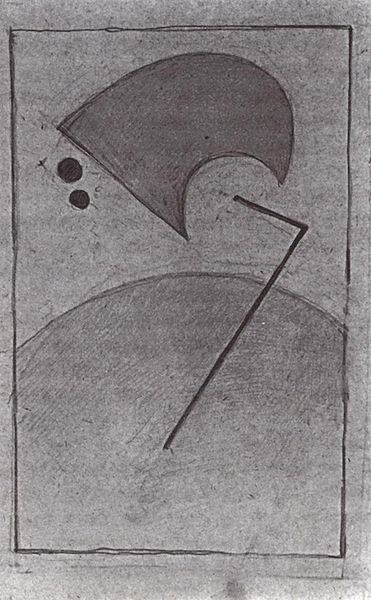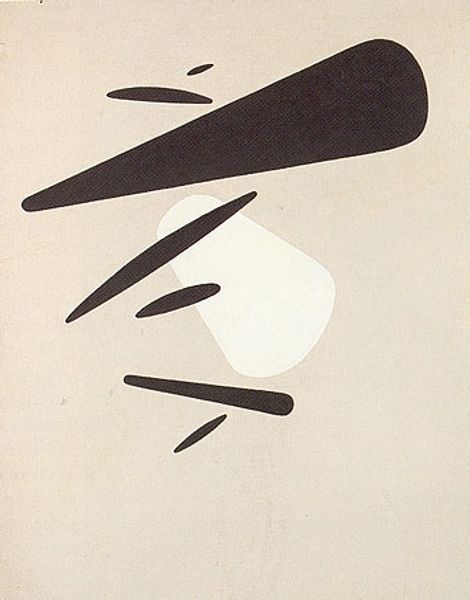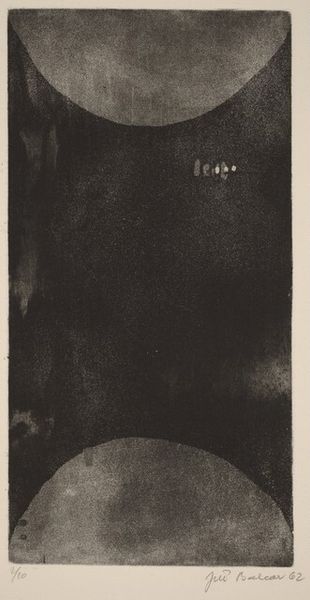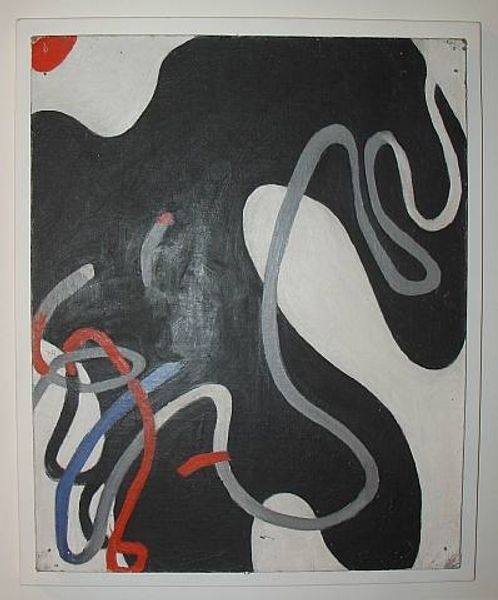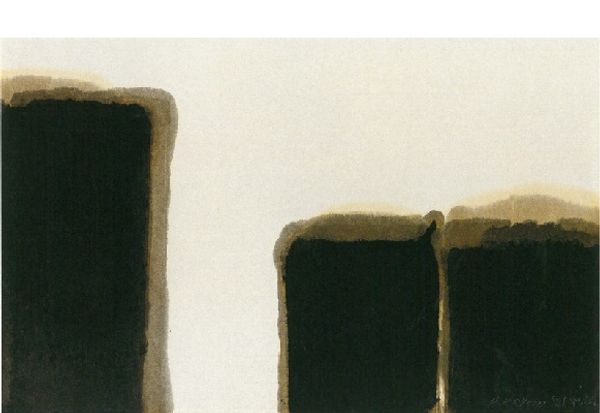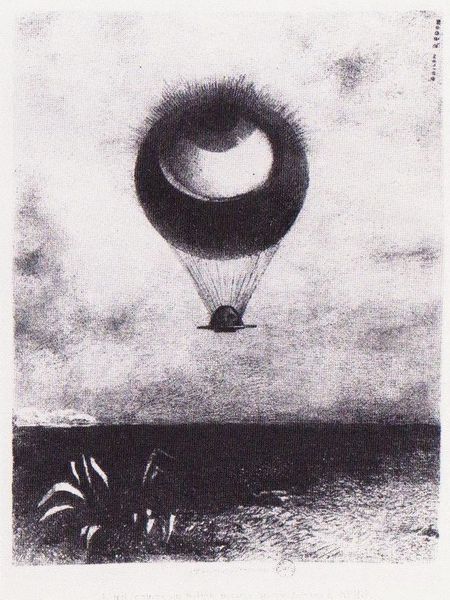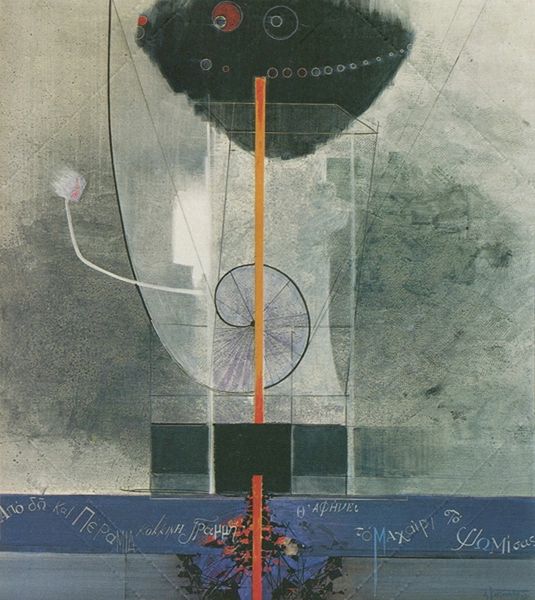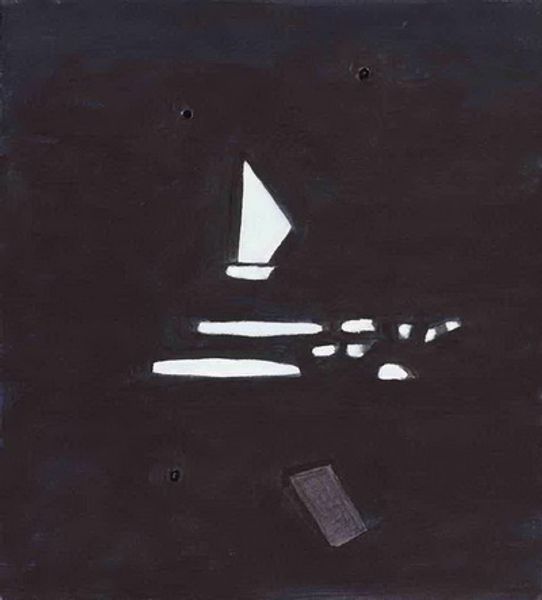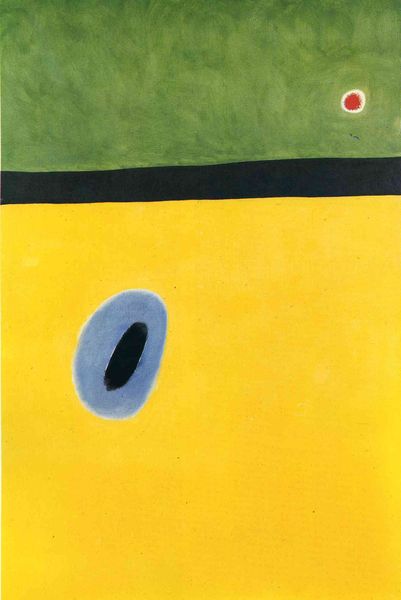
Copyright: Joan Miro,Fair Use
Curator: The painting before us, entitled "Landscape with Snake", was created by Joan Miró in 1927, offering a unique perspective on the world around him. Editor: The color palette is striking, isn't it? Muted browns and blacks dominate, lending it a sense of quiet foreboding. What do you think Miró was aiming for with that sort of simplification? Curator: In 1927, Miró was deeply embedded in surrealist circles. These dreamscapes, these supposed landscapes, offer a portal into the anxieties of a society confronting modernization and questioning established forms. You've also got to factor in post-war tensions. The landscapes reflect those traumas in form and shape, that’s clear to me. Editor: Interesting interpretation. It feels almost like a study in reduction, paring down forms to their most essential elements. The starkness is compelling – a black ground, ochre shapes... it's the very bare bones of representation. And the lines themselves are like seismographs! Curator: That starkness and supposed simplicity invites dialogue, but remember that the surrealist movement embraced the chaotic subconscious, so those clean lines can easily have roots in anxieties of social displacement, Spanish identity, or questions about gender performance. Editor: That brings up the placement of that dark, vaguely phallic cylinder... Do you think there’s significance there? Curator: Absolutely, the figures and objects invite interpretation—consider that even something as “simple” as the snake can function as both a reference to colonial pasts, a biblical warning about nature, and so on. I would go further to see how that specific combination of elements could serve to empower overlooked peoples from historically disenfranchised groups. Editor: It does draw your eye, though. As you said, that ambiguity almost challenges the viewer to project their own interpretations onto it. It’s incredibly economical, if that was the intention. A master class in "less is more"! Curator: Precisely, and even in these deceptively minimal forms, Miro is actively playing with expectations of the role that visual art could perform politically, and in doing so creates an intriguing social commentary on tradition and the new. Editor: It has really given me food for thought. Curator: For me as well.
Comments
No comments
Be the first to comment and join the conversation on the ultimate creative platform.
